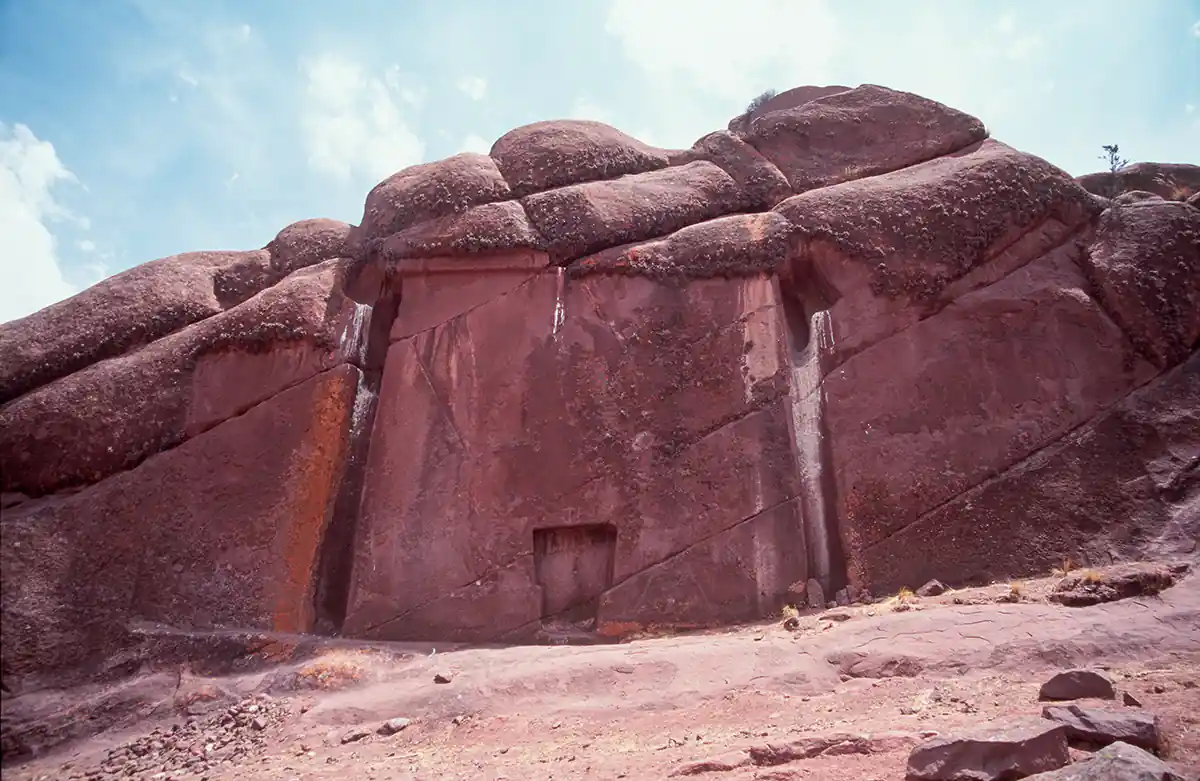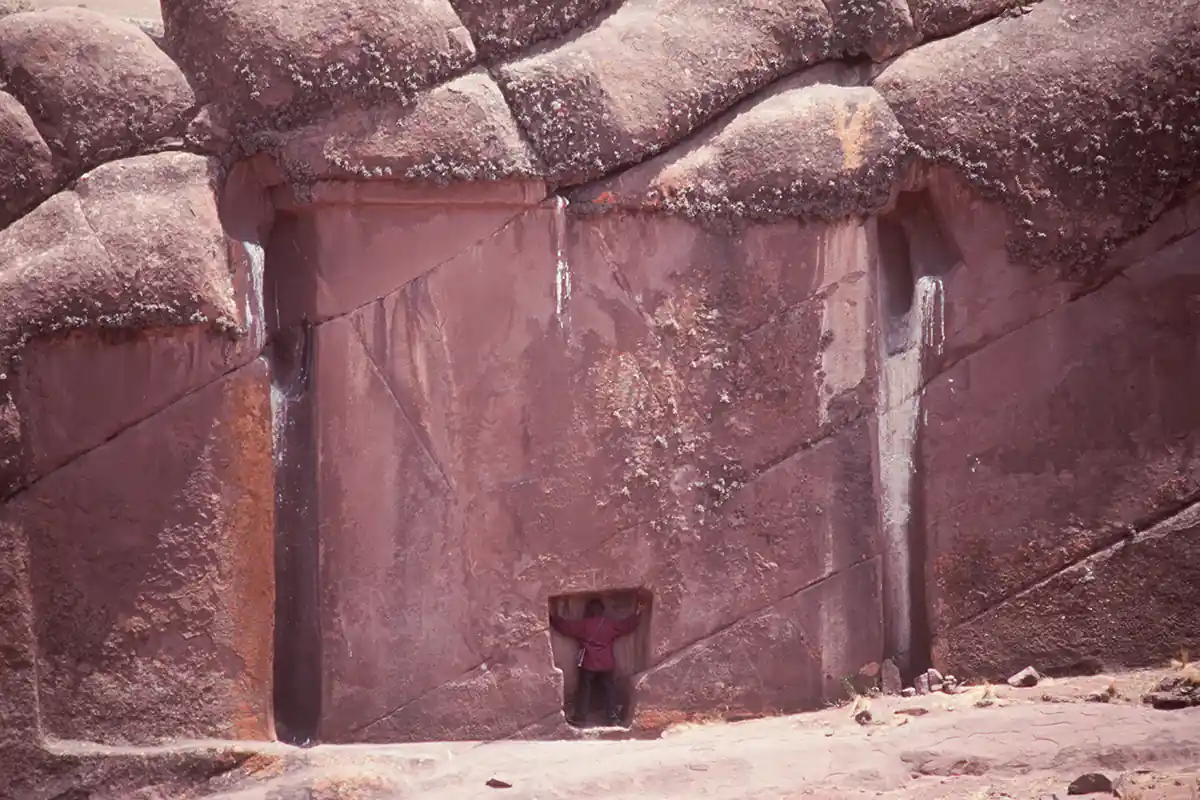Aramu Muru
Aramu Muru, also known as Hayu Marca or the "Gate of the Gods", is a mysterious and enigmatic site located in Peru, near the shores of Lake Titicaca. This ancient stone structure has fascinated archaeologists, historians, and spiritual seekers for decades, leaving many to speculate about its true purpose and the profound significance it holds.
History and Construction
The precise origins of Aramu Muru are shrouded in the mists of time. Mainstream archaeology suggests it might be an unfinished Incan construction project. The site consists of a massive, flat-faced stone surface with a meticulously carved T-shaped niche, roughly 6 feet and 6 inches tall. The geometric precision of this carving is remarkable, raising questions about the capabilities of the people who created it. However, the lack of other similar Incan structures in the region suggests alternative theories deserve consideration.
Sacred Site and Mythology
Aramu Muru lies within a region revered as sacred by the indigenous Aymara and Quechua people for centuries. Lake Titicaca itself is considered a place of immense spiritual power, believed to be the birthplace of the Incan civilization and their sun god, Inti. Legends of Aramu Muru paint a picture far beyond that of a simple abandoned project.
One prominent legend tells of an Incan priest named Aramu Muru who fled the Spanish conquistadors during the 16th century. Carrying a sacred golden solar disk, a key to hidden knowledge and power, he sought refuge in these lands. Upon arriving at the stone door, he performed a ritual with the disk, causing the niche to act as a portal, which he then disappeared through. This legend has imbued the site with an aura of otherworldliness and mystery.
Pilgrimage and Spiritual Significance
The legends and the feeling of immense energy surrounding Aramu Muru have transformed it into a major pilgrimage destination, particularly for those seeking spiritual experiences or connections to ancient wisdom. Visitors often report sensations of peace, heightened awareness, and a profound connection to the natural world when at the site.
Many esoteric and New Age practitioners believe Aramu Muru to be an interdimensional portal, a gateway to other realms or dimensions. They perform rituals, meditations, and ceremonies in attempts to tap into its perceived powers. The T-shaped niche is often interpreted as a symbolic keyhole, with a belief that the right ritual or knowledge can activate this portal.
Controversies and Speculation
The allure of Aramu Muru attracts a mixture of tourists, spiritual seekers, and those fascinated by the possibility that the site represents an unknown chapter in human history. The lack of concrete evidence surrounding its origin fuels speculation ranging from ancient lost civilizations to extraterrestrial influence. Naturally, skepticism surrounds many of these claims, and archaeological consensus generally leans towards the unfinished Incan construction theory.
The Enigma Endures
Whether Aramu Muru is an abandoned Incan work, a portal to other dimensions, or something else entirely, its enigma continues to captivate the imagination. It stands as a testament to the enduring power of mystery and the human desire to connect with something larger than ourselves. As visitors flock to this sacred space, they walk a path between history and myth, seeking answers to questions that might forever remain elusive. The legacy of Aramu Muru endures, a symbol of the boundless curiosity and spiritual yearning embedded within the human spirit.

Martin Gray is a cultural anthropologist, writer and photographer specializing in the study of pilgrimage traditions and sacred sites around the world. During a 40 year period he has visited more than 2000 pilgrimage places in 160 countries. The World Pilgrimage Guide at sacredsites.com is the most comprehensive source of information on this subject.


